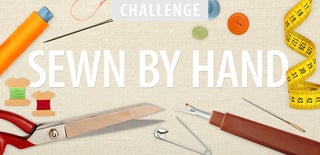Introduction: LED Owl Pin
As the days have gotten shorter and I wanted to make some cute, glowing pins for kids to wear outside. Also, I started taking the Instructables Wearable Electronics class, so I thought it would be a fun way to do the homework. These also make fun ornaments or stalking stuffers.
Step 1: Choosing Patterns
To get inspiration for a pattern I turned to the internet. There are many felt animal patterns out there to chose from or get inspiration for your own. Animal or plant patterns are plentiful and very cute. For this project I decided to make an owl. I saw online some cute felt owls and based on those, in Adobe Illustrator, I created a pattern. There are many great patterns for free, so just use one you like. Also, I wanted the circuit to be very basic and easy to make and troubleshoot. So, I decided to just have the owl's eyes light up. Nothing really fancy, after all it was my first soft circuit. No need to add to sewing growing pains with microcontrollers and code.
Attachments
Step 2: Materials
I will be using basic materials for soft circuits that are taught in the Wearable Electronics class here at Instructables. You will need:
- Felt swatches
- Two (2) red LED sequins (from Adafruit)
- One (1) sewable battery holder (from Robot Shop)
- One (1) 3V CR2032 cell battery
- Conductive thread (from Adafruit)
- One (1) 1KiloOhm Resistor (from Amazon)
- Fabric glue
- Scissors
- Sewing needles
- Nylon thread
- Metal snaps
- Safety pins
- Round needle nose pliers
- White pencil
- Black marker
Step 3: Cut Out the Patterns
In this project the shapes from the pattern will be cut by hand. If you have access to a laser cutter, you could cut the shapes that way and with more precision.
- Print out the animal pattern of your choice and cut out the shapes.
- Select the felt swatches you would like to work with. I chose blue, green, orange, beige and black felt for this project.
- On dark colored felt use the white pencil to trace out the shapes. On lighter colored felt, use the black marker to trace out desired shapes. For larger shapes, it will be helpful if you pin them to the felt when tracing out.
- Cut the various shapes. IMPORTANT: for this project I cut the main owl body 3 times. I wanted to conceal the circuit and my lack of sewing skill. I am achieving this by creating a front, a back and a middle which will be used as a "soft circuitboard".
- When you are done cutting, you will have a pretty good idea of what the final outcome of the project will look like :)
Step 4: Plan Out Your Circuit
Electrically, this is a very basic circuit: two diodes in parallel connected with a battery via switch and resistor. Electronics are super easy on a prototype board that imposes certain rules. But, be prepared that this will be more challenging on fabric using thread. Take your components and try to place them in such a way that it makes it logical and easy to use.
Some of the challenges I faced was figuring out how to make a soft switch and placing the battery in such a way that it could be accessible for replacement. Using nylon thread when I wanted insulation was sometimes helpful. Also, shaping the resistor into a sewable component came form the wearables class.
Step 5: Glue the Shapes to the Body
Fabric glue is an easy and fast way to apply the shapes and prepare for the soft circuit. Sewing is an alternative to the glue. Since this isn't really a stuffed animal, the firmness of the applied glue will be helpful.
Step 6: Making the Circuit
Start sewing the circuit with conductive thread. When you terminate a point, use glue to tack down any loose threads. They can be the main cause of a short circuit. Because the majority of the circuit is concealed, I am less worried about how neat this looks.
The circuit construction construction went in the following way:
- On the middle layer, sew the cathode (-) of the battery holder to the resistor and sew one end of the resistor down. Terminate the thread and glue it to the fabric.
- Make a path from the resistor to the first eye of the owl and sew on the cathode of the first LED and terminate the conductive thread (ie sew it in and cut it)
- Make another, parallel path from the resistor to the second eye of the owl and sew in the cathode of the second LED
- From the anode (+) of the first LED sew a path to the snap that will be the ON part of the switch and terminate.
- Repeat this from the anode of the second LED
- Sew on a pice of fabric on the back that will snap to the ON switch. We are making a soft switch with this.
- From the anode of the battery sew a path through the little piece of fabric to the snap. When this Piece of fabric snaps in, the circuit is on.
Step 7: Finishing Touches
The following the few touch-ups will make the pin perfect:
- Sew on a snap by the battery. This will allow the battery to be replaced.
- Sew on the irises. Cut a tiny hole in the center so the diode shines bright.
- Sew on a safety pin (with nylon thread) to the back so this can be pinned to a jacket or backpack.
- Sew the edges of the owl together leaving a flap around the battery of accesibility.
Step 8: Voila: the Owl

Participated in the
Homemade Gifts Contest 2016

Participated in the
Soft Toys Challenge

Participated in the
Sewn By Hand Challenge














